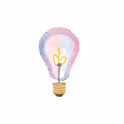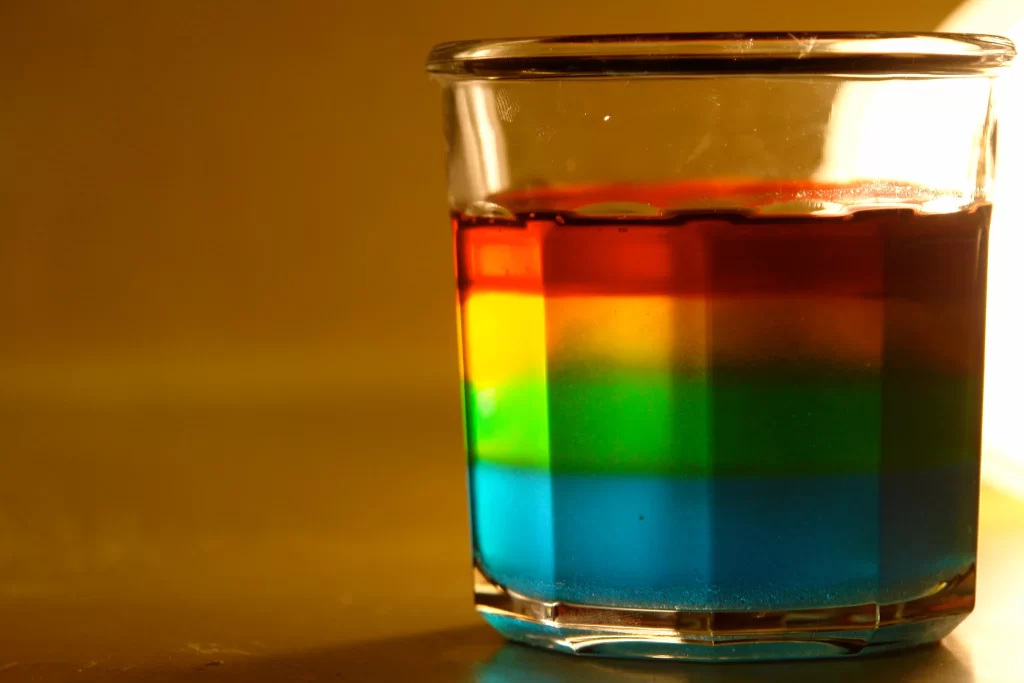 Experiment Name: Rainbow in a Jar
Experiment Name: Rainbow in a Jar 
Topic: Density & Chemistry Difficulty: Beginner Time: ~30 minutes Ages: 8+
 Objective:
Objective:
Learn how liquids of different densities stack without mixing, creating a colorful “rainbow” effect in a jar.
 Materials Needed:
Materials Needed:
- 5 clear cups or small bowls
- Sugar
- Warm water
- Food coloring (at least 3 colors)
- Tablespoon
- A clear glass or jar
- Spoon or stirrer
- Pipette or dropper (optional, but helpful)
 Procedure:
Procedure:
- Prepare sugar solutions
- In Cup 1: Add 1 tbsp sugar + 2 tbsp warm water + 1 drop red food coloring
- In Cup 2: 2 tbsp sugar + 2 tbsp water + orange/yellow color
- In Cup 3: 3 tbsp sugar + 2 tbsp water + green color
- In Cup 4: 4 tbsp sugar + 2 tbsp water + blue color
- In Cup 5: 5 tbsp sugar + 2 tbsp water + purple color
- Stir each solution until all sugar is completely dissolved.
- Layer the colors (Most dense to least dense):
- Start by pouring the most sugary solution (Cup 5) into the jar.
- Next, slowly layer Cup 4, then Cup 3, etc.
- Use a spoon turned upside-down or a pipette to pour slowly down the side of the jar to avoid mixing.
 What’s Happening?
What’s Happening?
Liquids with more sugar are more dense, so they sink to the bottom. Less dense liquids float on top. Because of these different densities, the liquids stay separated in layers—creating a liquid rainbow.
 Safety Note:
Safety Note:
This experiment is safe and non-toxic, but don’t drink the sugar solutions—especially after they’ve been mixed with food coloring.
 Share Your Results!
Share Your Results!
Did your rainbow turn out amazing? Tag us or submit your photo to be featured on our page!

